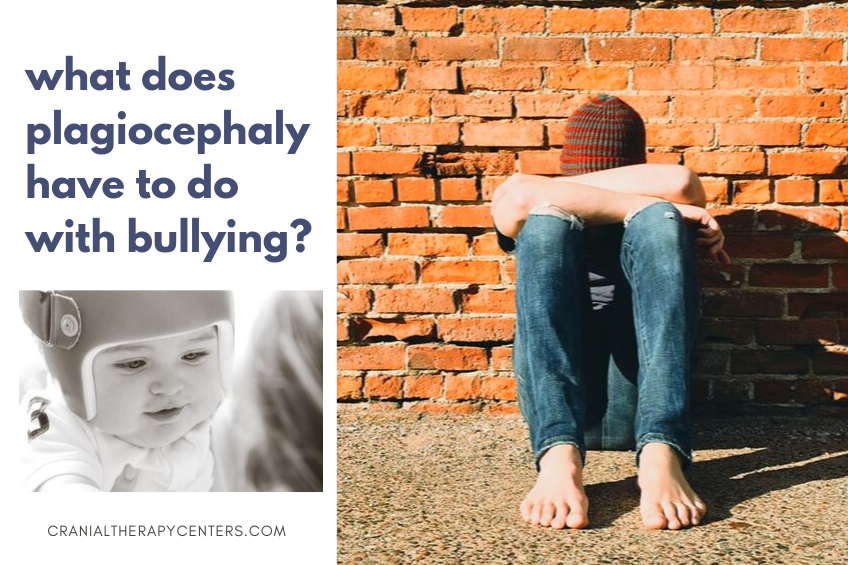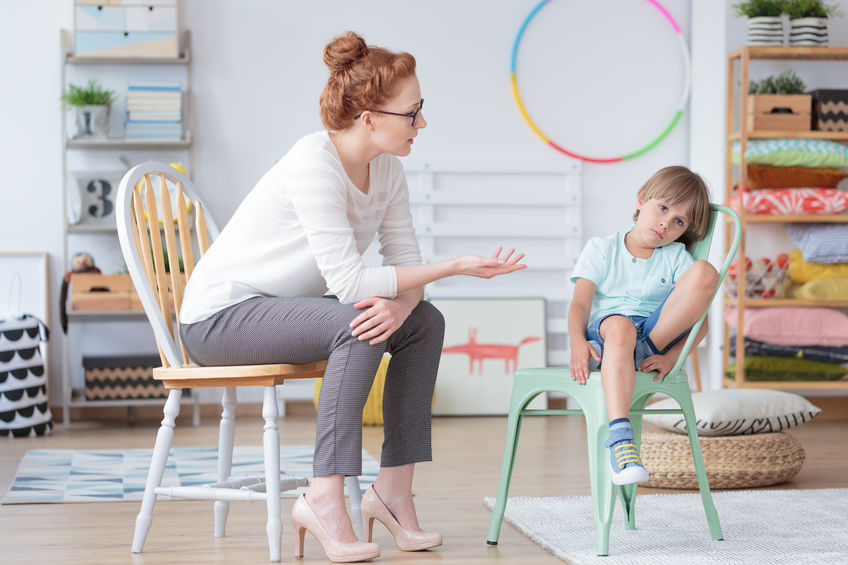What does plagiocephaly have to do with bullying?
/

Bullying has been around for centuries, but in more recent times has gotten a lot more attention. According to the U.S. Department of Health and Human Services, between one in four, and one in three students are affected by school bullying. This means that approximately between 25% to 30% of our children in both public and private school sectors have experienced some type of bullying. It is for this reason that the United States government has started stopbullying.gov, which makes parents and educators aware of early signs of bullying. There, one can find all the resources for identifying and preventing all types of bullying.
Here is how the United States government defines the question, “What Is Bullying?”
“Bullying is unwanted, aggressive behavior among school aged children that involves a real or perceived power imbalance. The behavior is repeated, or has the potential to be repeated, over time. Both kids who are bullied and who bully others may have serious, lasting problems.”
One of the more common types of bullying, is bullying based on physical appearance, or better known as “appearance related bullying”. This includes bullying or harassing based on one’s physical appearance, size, height, or disfigurement. Unfortunately, these kids wake up every morning hoping their appearance might change to avoid a negative social interaction with a peer. What’s most difficult is that they don’t even know that a comment or isolation is a form of bullying. This allows the bullying to linger, going unnoticed by adults and these children begin to descent into a social free fall.
Not treating plagiocephaly in most cases will leave your baby with some type of head deformity. Before flat head baby syndrome had gained awareness over 10 years ago, it had been accepted within society to live with whatever head shape one had. Babies eventually grew up to be kids, adolescents, and adults, and had to deal with managing their odd head shape, both on a personal and social level. That might mean a teen girl using a finishing spray to keep her hair in place or an elementary school boy always wearing a beanie on their head. Everyone had to figure out how to hide their own head deformity.
What if your grown boy or girl’s head deformity could have been avoided?
How would they feel if they could have had a perfectly shaped head just like everyone else in their class? Maybe they would not have been bullied for the way they look? These are all tough questions that hopefully no parent should ever have to answer. In most cases where the baby’s plagiocephaly was left untreated, it was not the parent’s fault. It’s often due to a lack of awareness or absence in financial resources.
Why is so easy for my child with a flat head to be bullied?
Before identifying this question, we must understand what bullies are looking for and whom they choose to prey upon. People of any age who bully are in most cases looking for power and control. They will pick on the easiest target, which are those who are most vulnerable and are not socially stable. The more these individuals are bullied the more susceptible they become to being bullied by others. As the victim begins to feel tiny and helpless the bully begins to gain more power and control.
There is nothing wrong with anyone who has a slight head deformity. People can live with it and lead successful and meaningful lives. However, if there is a bully tramping the school terrain, they will prey on the weak first. This is comparable to the way lions and tigers hunt in the wild. These beasts go after the slow and lame animals versus the big and fast ones. Bullies are looking for a quick and easy way to gain power without even having a conversation.
Comparing flat head to other disabilities
Flat head baby syndrome impacts the most noticeable part of the body, the head. When you look at the person next to you the first thing you notice is their face followed by the head. Just look at all the political caricatures, what’s mostly emphasized is that individual’s head. Whenever a cartoon about North Korea is in the news, Kim Jong Un always has a flat back of the head. Other disabilities like stuttering and a lisp can also be the cause of bullying but there must be a conversation first to identify this weakness. Until that happens, chances are that this disability won’t be picked on. Poor physical appearance can be quickly identified by the bully and be used against their potential target.

Let’s say my child has a head deformity, how can I prevent bullying?
It’s best for parents to get educated on bullying and to address children who are at the greatest risk. Know what signs to look out for and ask your child how his or her day was at school. As a parent, you are the child’s protector, and its vital to keep an open line of communication. Being in close contact with your child, will prove to be your greatest asset in preventing bullying. Mothers tend to notice when something is not right with their child. Put away your phone and make sure to pay attention to their mood and emotional well-being. Here are some tips which can help prevent your child from being bullied based on his or her looks.
- Teach your children what bullying is and how it’s important to tell an adult if one of your peers is making you feel uncomfortable. Very often children will want to protect the offender as not to worsen the situation. Parents must clearly confirm with the child that they are protected both in and out of school and should have no fear in coming forward to an adult.
- Start building up your child’s self confidence by giving them opportunities to do the things they love most. You might find that your boy might prefer creating crafts rather than going to an after-school program. Get involved in their creations and try and find the points of success to build on. Even if their creation is not perfect, there is always a silver lining to everything.
- Have your spouse and you work on your relationship and be models for your children on how to deal with all situations. Not always will one party come home in a good mood and its important for your child to see how the two of you deal with it. If your husband had a bad day at work, make sure your child sees how you address the emotional aspects and soothing process in making them feel better.
- Document how the day went with your child in a notebook. This will be a good activity to do before going to bed and will reveal things that you might not have known. At the same time, it’s a great time to bond with your child while preparing them for the next day.
Start embracing who your child is and lower your expectations
Pressure used to be a good motivator, but times have changed. Our children’s emotions, need to be nurtured and supported as they grow up. If you are feeling a sense of remorse that a head deformity stemming from plagiocephaly could have been avoided, it’s time to put it behind you. Every boy or girl can feel when they are not fitting a certain mold and will retreat socially and begin to wrap themselves up in a cocoon. As parents, we must look in the mirror and understand that our innermost feelings impact our children. It’s like a one-way radio communication which no one else can tap into except the two of you. Appreciate who they are and give them the best shot to be successful. A brilliant control study done in the United Kingdom, showed that a warm supportive family has proven to be a safeguard form being bullied. The results are clear, reinforcing the family union is the greatest armament against a child being bullied.

Not being empathetic to a child will have a negative impact on their empathy towards others
If a parent does not pay attention to when a child is disappointed or upset, the child will grow up and lack empathy. This will give them a major disadvantage when trying to build relationships with their peers. You don’t have to wait until your child is in elementary school to teach them empathy. When your baby is trying to begin walking and falls, pick them up and give them a hug and kiss. Then get them right back up on their feet to try again. As the child grows up, they will identify when empathy is needed and when it’s not. Often, they will sense that empathy is exercised on people to whom you feel close to. One of the advantages of teaching your child to be empathetic towards others is that they will begin to realize when people are apathetic towards them. Children will be able to identify when they are not being treated properly and most importantly, when being bullied. Being empathetic is both important for their current and long-term emotional well-being.

Cranial Therapy Centers is the only early interventions cranial center in the United States which provides both helmet and manual therapy treatment. We are American Board for Certification in Orthotics, Prosthetics and Pedorthics Facility. Visit us in Lakewood NJ, at 1352 River Ave Unit 14, Lakewood NJ, 08701 or in Teaneck NJ at 1086 Teaneck Road Suite 3F, Teaneck, NJ 07666. You can also email us info@cranialtherapycenters.com
